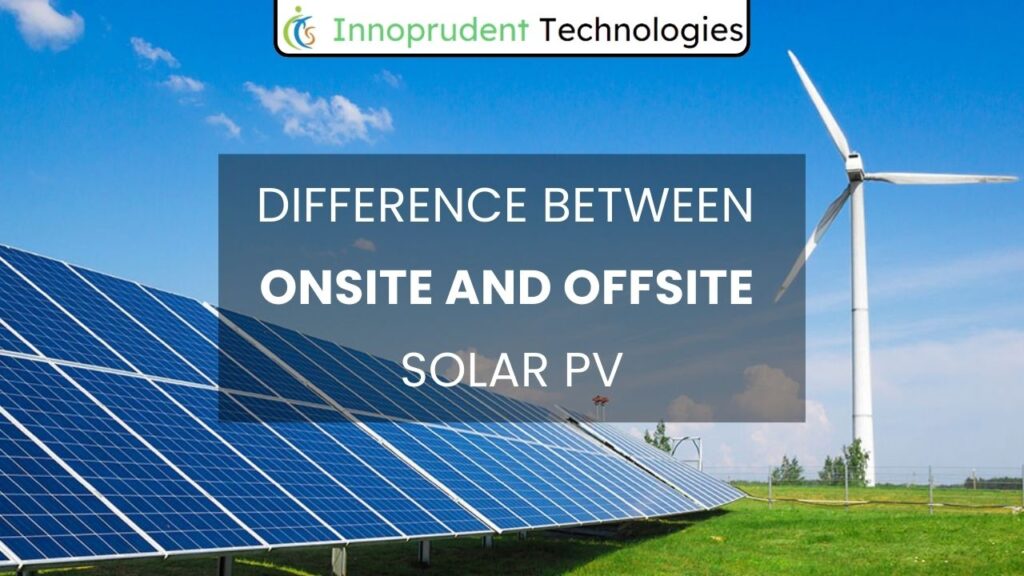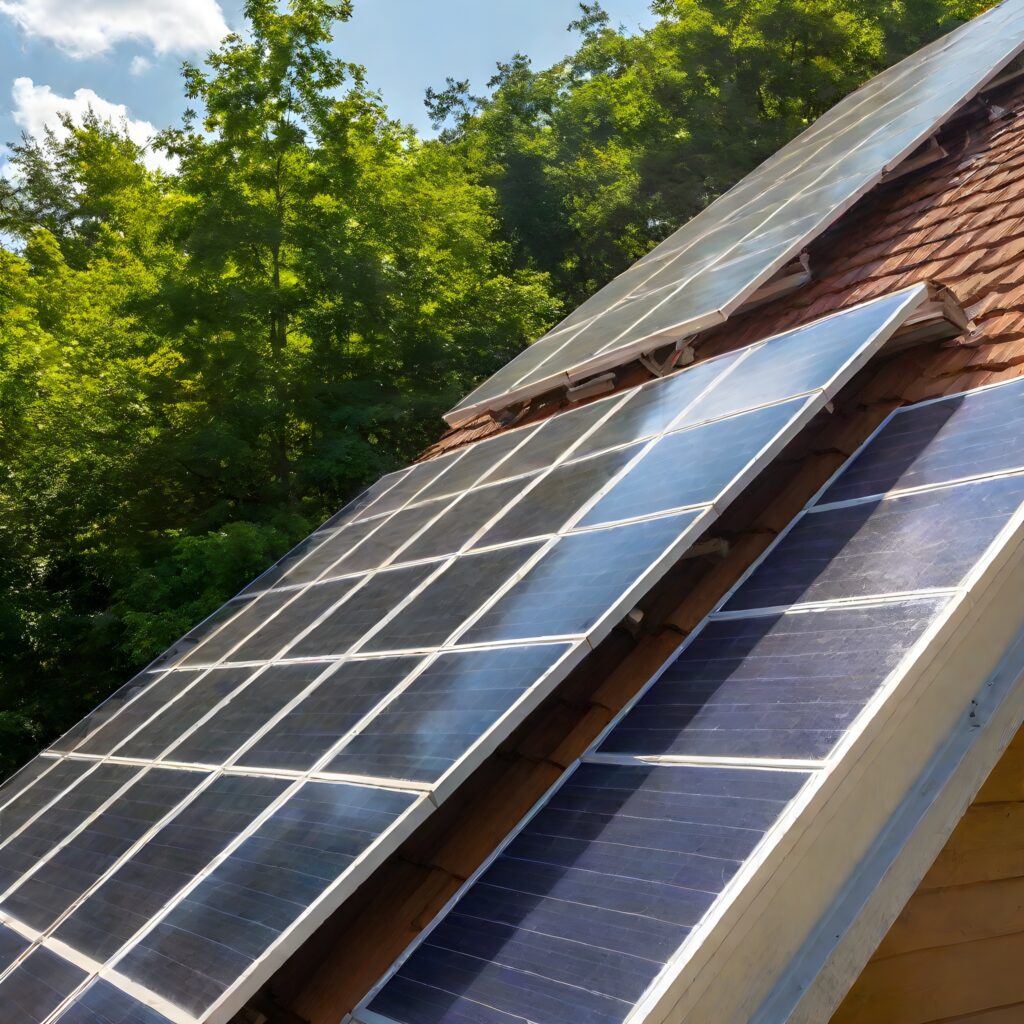Solar photovoltaic (PV) technology has revolutionized the way we generate electricity. It harnesses the power of the sun to produce clean, renewable energy. As the demand for sustainable energy sources continues to rise, the discussion about the advantages and disadvantages of onsite and offsite solar PV installations has become increasingly important.
In this article, we will explore the key differences between onsite and offsite solar PV systems, helping you make an informed decision about which option is best suited for your energy needs.
What is Solar PV?
Before delving into the Topic, let’s briefly understand what solar PV is. Solar PV systems use solar panels to convert sunlight into electricity. These panels consist of photovoltaic cells that absorb photons from sunlight and generate direct current (DC) electricity. An inverter then converts this DC electricity into alternating current (AC), which is used to power homes, businesses, and more.
Onsite Solar PV
Onsite solar PV, as the name suggests, involves installing solar panels directly at the location where the electricity will be consumed. This can be on the rooftop of a house, a commercial building, or even in open areas on the property.
Onsite solar PV systems are also known as “behind-the-meter” systems because they are connected directly to the electrical panel of the building they serve.
Key Features of Onsite Solar PV:
Ownership: One of the primary advantages of onsite solar PV is that the system owner directly benefits from the energy generated. Whether it’s a homeowner, business owner, or institution, they can use solar energy to offset their electricity bills or even sell excess power back to the grid through net metering.
Control: Onsite solar PV provides maximum control over the system. Owners can choose the type and size of solar panels, inverters, and other components. They can also monitor the system’s performance and make adjustments as needed.
Energy Independence: Onsite solar PV reduces dependence on the grid, offering a degree of energy independence. This can be especially valuable during power outages or in areas with unreliable grid service.
Environmental Benefits: By generating clean, renewable energy onsite, solar PV systems help reduce greenhouse gas emissions and contribute to a greener planet.
Installation Costs: While onsite solar PV systems offer long-term savings, the upfront installation costs can be relatively high. However, incentives, tax credits, and financing options are often available to help offset these costs.
Offsite Solar PV
Offsite solar PV, also known as “remote solar” or “solar farms,” involves the generation of solar energy at a location separate from where it is consumed. These solar farms can be vast arrays of solar panels located in sunny regions, often far from urban areas. The electricity generated is then transmitted through the grid to end-users.
Key Features of Offsite Solar PV:
Scale: Offsite solar PV projects are typically much larger in scale than onsite installations. Solar farms can cover extensive areas and generate significant amounts of electricity.
No Need for Land: End-users do not require land or rooftops to host solar panels, making offsite solar accessible to individuals and organizations with limited space.
Community Solar: Offsite solar can also take the form of community solar projects, where multiple customers share the benefits of a solar farm, even if they cannot install panels on their own properties.
Simplified Maintenance: Maintenance and operational responsibilities for offsite solar PV projects usually fall on the project owner or operator, reducing the burden on end-users.
Economies of Scale: Solar farms benefit from economies of scale, often resulting in lower overall costs per unit of electricity produced compared to onsite systems.
Differences between Onsite and Offsite Solar PV
Now that we have a basic understanding of both onsite and offsite solar PV, let’s delve into the key differences between these two approaches:
| Aspect | Onsite Solar PV | Offsite Solar PV |
| Location | Installed at point of use (e.g., rooftops, property). | Located remotely (e.g., solar farms in sunny regions). |
| Ownership and Control | Full control and ownership by system owner. | Ownership typically by developer or utility; limited user control. |
| Installation Costs | Higher upfront costs, long-term savings. | Lower upfront costs for end-users, project owner bears initial expenses. |
| Maintenance & Operations | Owner’s responsibility. | Typically handled by project owner or operator. |
| Scalability | Limited by available space. | Highly scalable for larger electricity generation. |
| Accessibility | Requires suitable space on property. | Accessible to a broader range of customers. |
| Environmental Impact | Reduces grid reliance and emissions at the point of use. | Reduces emissions at remote solar farm; contributes to grid decarbonization. |
Choosing the Right Option
Deciding between onsite and offsite solar PV depends on various factors, including your goals, available space, budget, and degree of control. Here are some considerations to help you make an informed choice:
- Goals and Priorities:
- If energy independence and maximum control are crucial, onsite solar may be the better choice.
- If cost savings and minimal upfront investment are top priorities, consider offsite solar.
- Space Availability:
- Assess whether you have suitable space on your property for onsite solar panels. If not, offsite solar may be a more viable option.
- Budget:
- Consider your budget and financial goals. Onsite solar may require a larger initial investment, but it provides long-term savings.
- Offsite solar often requires less upfront capital but may have a lower return on investment for individual users.
- Environmental Impact:
- Both onsite and offsite solar contribute to reducing greenhouse gas emissions. Evaluate which option aligns better with your sustainability objectives.
- Regulations and Incentives:
- Research local regulations, incentives, and tax credits that may influence your decision. These can vary widely by location.
Some Related Posts
Wrapping Up
The choice between onsite and offsite solar PV is not one-size-fits-all. Each approach has its advantages and disadvantages, and the decision should align with your specific circumstances, goals, and preferences. Onsite solar PV offers control and energy independence, while offsite solar PV provides scalability and accessibility.
Ultimately, both options contribute to a greener, more sustainable energy future, reducing our reliance on fossil fuels and mitigating climate change. Whether you opt for solar panels on your rooftop or benefit from a remote solar farm, you’re taking a step toward a cleaner and brighter future.
Frequently Asked Questions(FAQs)
Q1: What is the primary difference between onsite and offsite solar PV systems?
Ans: The primary difference is the location of the solar panels. Onsite solar PV systems are installed at the point where electricity is consumed (e.g., rooftops or property), while offsite solar PV systems are located remotely (e.g., in solar farms) and transmit electricity through the grid.
Q2: How do ownership and control differ between onsite and offsite solar PV?
Ans: Onsite solar PV systems are typically owned and controlled by the user, providing maximum control over the system. Offsite solar PV projects are often owned by a developer or utility, resulting in limited user control.
Q3: Which option is more cost-effective, onsite or offsite solar PV?
Ans: The cost-effectiveness depends on various factors, including upfront budget, available space, and energy goals. Onsite solar PV may have higher initial costs but offers long-term savings. Offsite solar often requires less upfront capital but may yield a lower return on investment for individual users.
Q4: Are there any environmental benefits to choosing onsite or offsite solar PV?
Ans: Both options offer environmental benefits. Onsite solar PV reduces grid reliance and greenhouse gas emissions at the point of consumption. Offsite solar PV reduces emissions at remote solar farms and contributes to overall grid decarbonization.
Q5: Can I still benefit from solar energy if I don’t have suitable space for onsite panels?
Ans: Yes, offsite solar PV, such as community solar projects, allows individuals and organizations without suitable space to benefit from solar energy generated at a remote location.



Pingback: What are Air Handling Systems? How does it keep Indoor Air Fresh? - Innoprudent
Pingback: What is DG Retrofit? How is it Transforming Diesel Generators for Efficiency - Innoprudent
Pingback: Commission for Air Quality Management (CAQM) in NCR Functions, Achievements, Challenges, Recommendations - Innoprudent
Pingback: What are the Benefits of Cummins Dual Fuel Sets? How is it Helping in Energy Efficiency? - Innoprudent